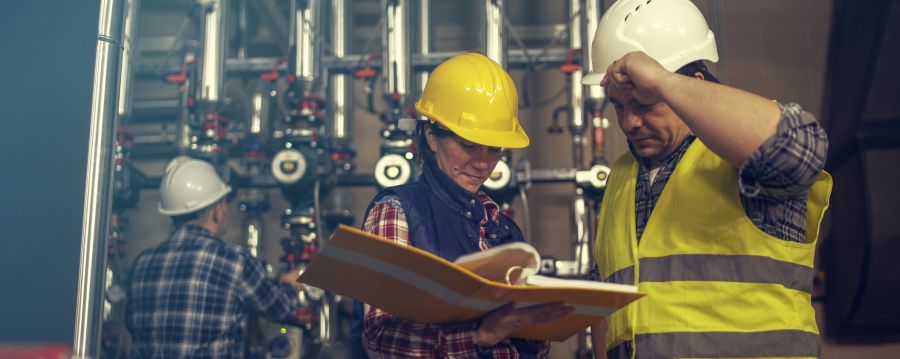
6 Tips to Prevent On-Site Injuries

When you’re on-site, the last thing you want to deal with is an injury. On-site injuries cause undue stress on both employers and employees.
While on-site accidents can happen in any environment, the good news is that these injuries are preventable. The key to preventing on-site injuries is to create a culture of safety awareness and to apply strategic site safety tactics.
Discover the impact of on-site injuries and actionable tips for injury prevention, below.
The Impact of On-Site Injuries
As the name implies, on-site injuries can lead to serious physical harm. In some cases, these injuries may even be fatal.
But, what’s worse is that these injuries can also lead to serious consequences, like workers’ compensation claims or even litigation. Workers’ compensation claims or a single lawsuit can put serious financial strain on your business and potentially derail your business’s growth.
Moreover, injuries on the job site also impact productivity. Workers injured may have to take time off for their injuries, which likely means that other staff will be picking up the slack in their absence. Without your team functioning at full capacity, productivity suffers and you may not be able to accomplish as much as you had originally hoped.
On-site injuries can also impact productivity by affecting morale. When injuries occur, workers who were not involved in the accident may question the safety of their work environment. Because they feel unsafe, workers may suffer from a loss of motivation or a deflated sense of morale that prohibits them from doing their best work, day in and day out.
Common On-Site Injuries
While it’s important to understand the impact of workplace injuries, it’s also important to know the most common types of workplace accidents.
In 2017, the Bureau of Labor Statistics reported that there were 882,730 occupational injuries and illnesses across all industries.
Their data indicated that of the cases reported on:
- 11% of injuries involved overexertion in lifting or lowering
- 64% of bone fractures injuries were from accidents in the service-providing industries
- 62% of slips, trips, and falls injuries happened on the same level
- 20% of slips, trips, and falls injuries were from an employee falling between two or more levels
- 15% of all non-fatal workplace injuries were from employees being struck by objects or equipment while on the job
- 35% of injury cases across all industries were from sprains, strains, and tears
This data also showed that, across all industries, more than 25% of all injuries were caused by slips, trips, and falls.
6 Tips for On-Site Injury Prevention
Now that we’ve covered the most common types of injuries and the impact these injuries can have on the workplace, it’s time to figure out how to prevent injuries from ever happening in the first place.
Consider the following tips to help establish a culture of safety and prevent accidents:
- Create awareness through education. Try implementing regular safety briefings, safety memos, and employee safety training to cultivate a safety-oriented mindset in your on-site workers. Training before and after employees enter the job site is crucial for diminishing workplace injuries.
- Install proper lighting on your job site. Ensuring that your job site is well-lit and visible will reduce the likelihood of injuries happening.
- Communicate potential hazards with adequate safety signage. Clearly identify safety hazards for your workers on the job site. Make sure to mark spills, obstacles, or any other hazards that could potentially harm employees on the job.
- Contain spills quickly on the job site. To contain spills quickly, you must make sure you have proper clean-up equipment readily accessible. Consider alerting all of your on-site employees to the location of this equipment so they can help in the event of an accident.
- Install proper ventilation on site. Properly ventilating your job site will prevent toxic chemicals or other foreign particles from being inhaled by your workers.
- Enforce proper attire. Dress codes are put in place for a reason. And that reason is often that certain styles of dress are safer than others. Proper attire will depend on your specific job site but can include slip-resistant shoes or hard hats.
Safety prevention starts with awareness. With a general understanding of the most common workplace injuries and how they impact your business, you can better identify potential risks on your job site. Apply your safety knowledge and the tips outlined above to prevent injuries from happening on-site.
Safety Hazard Signage
Identifying potential worksite hazards with appropriate safety signage is key to worksite safety – and OSHA compliance. In addition to known hazards like lead paint, be sure to mark temporary spills, obstacles or other hazards that could potentially cause harm.
This OSHA-format lead hazard sign makes your hazmat message clear to employees, visitors and inspectors.
About the Author::
Emma Voss is a content marketing specialist from San Diego, where she helps create amazing content for companies like Housecall Pro. She loves learning new things, writing articles, and working on her art. When she’s not scouring the web for the latest content marketing insights, you can find Emma hiking the San Diego hills with her french bulldog, Luna.

